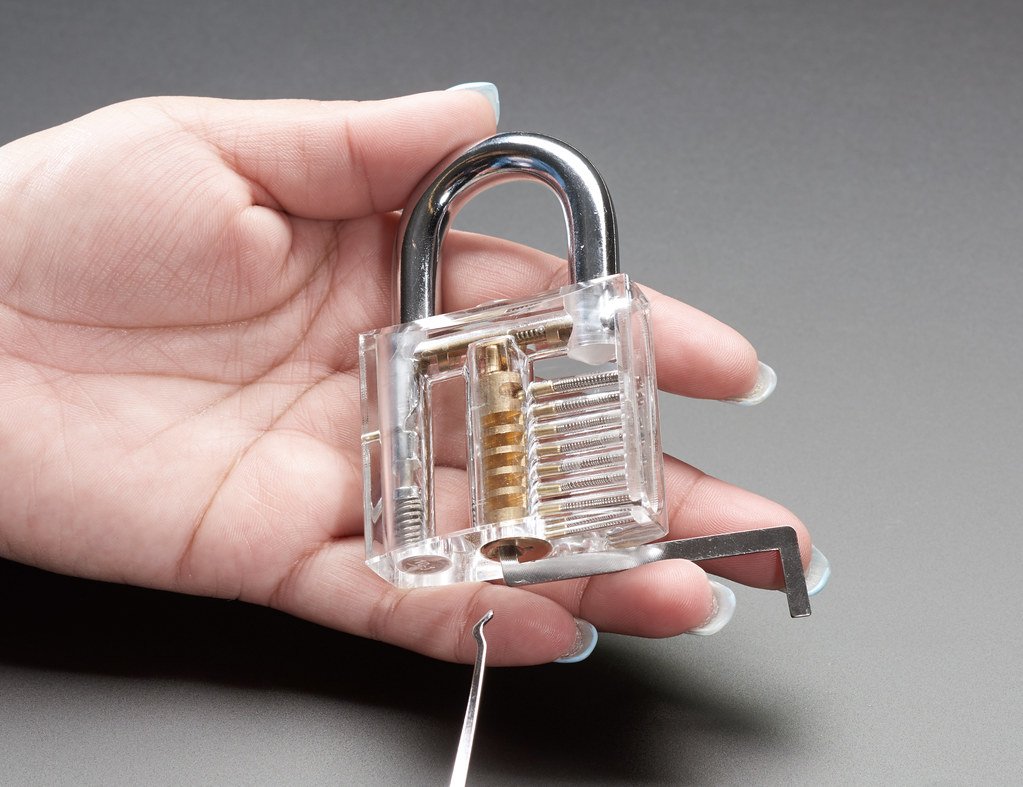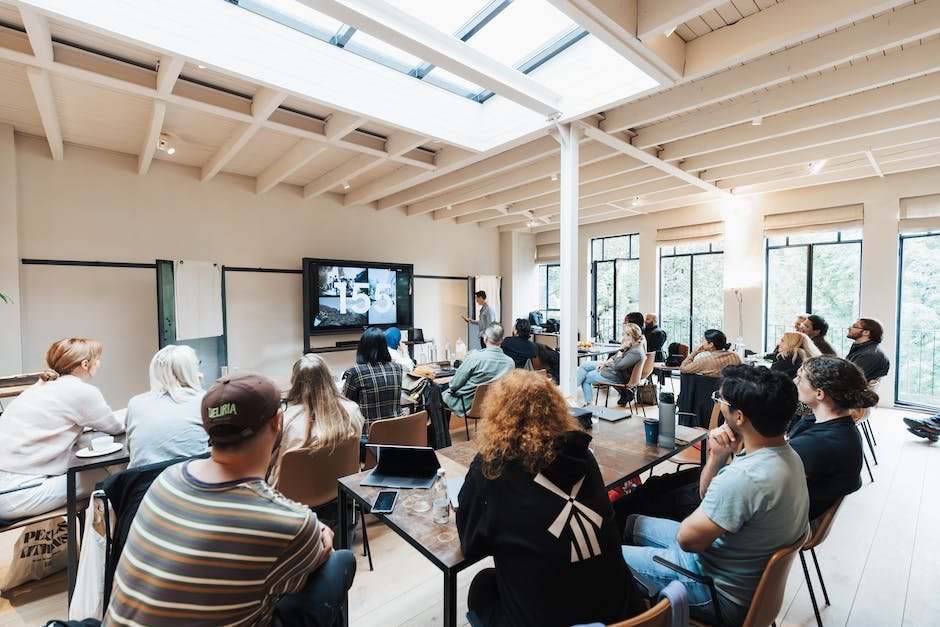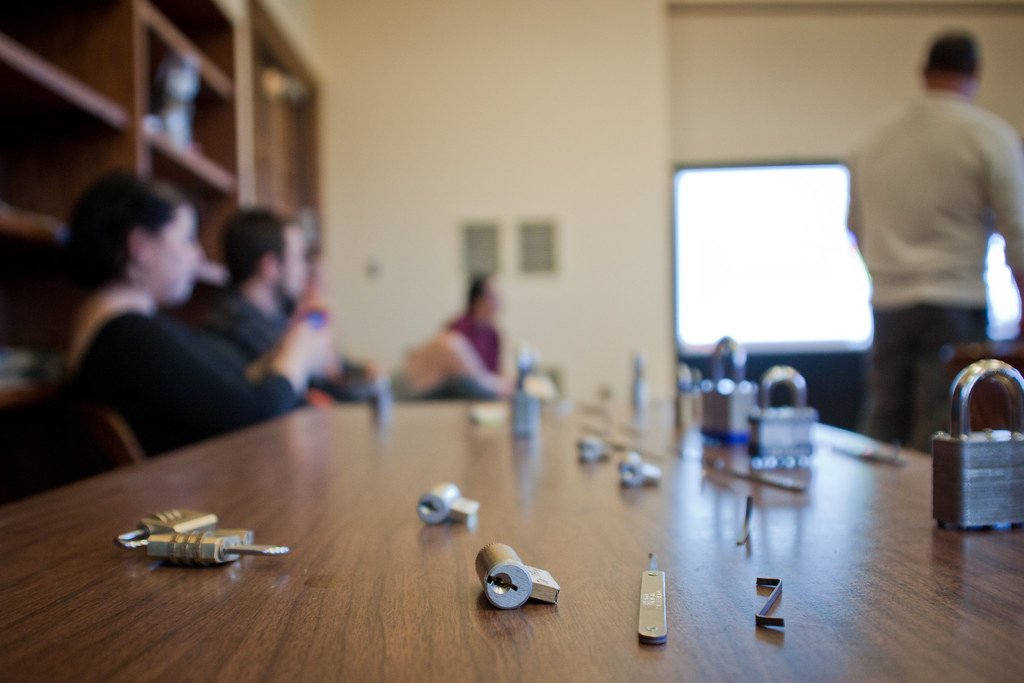Have you ever felt a surge of curiosity as you watched a skilled locksmith effortlessly manipulate a lock and wondered if you could master this mesmerizing art form yourself? Well, your curiosity is about to unlock a whole new world of possibilities! In this article, we will delve into the captivating realm of locksport and explore how you can create your very own DIY locksport course to teach others this captivating skill. Brace yourself for a riveting journey that combines the thrill of knowledge with the joy of sharing as we embark on a mission to transform novice lock enthusiasts into masters of the craft. So, grab your toolkit and prepare to become the architect of your very own lock-picking haven!
Table of Contents
- Building the Foundations: Understanding the Basics of Locksport
- Designing a Comprehensive Curriculum: Crafting Lessons for Different Skill Levels
- Setting Up a Practical Training Area: Creating a DIY Locksport Course Space
- Selecting the Right Tools and Equipment: Essential Supplies for Teaching Locksport
- Nurturing a Community of Locksport Enthusiasts: Organizing Practice Sessions and Workshops
- Q&A
- The Conclusion

Building the Foundations: Understanding the Basics of Locksport
Locksport is a fascinating and often misunderstood hobby that revolves around the art of picking locks. It combines elements of problem-solving, manual dexterity, and a deep understanding of lock mechanisms. Whether you’re a beginner or a seasoned locksmith, building a strong foundation in the basics of locksport is essential to unlock the endless possibilities in this captivating skill.
The Basics
- Types of Locks: Familiarize yourself with different types of locks, such as pin tumbler, wafer, or disc detainer locks. Understanding their designs and working principles is crucial to advancing in locksport.
- Lock Picking Tools: Get to know the essential tools of the trade, including picks, tension wrenches, and rakes. Each tool has its purpose, and learning when and how to use them correctly will enhance your lock-picking abilities.
- Lock Anatomy: Delve into the anatomy of a lock, dissecting its components like the plug, pins, springs, and driver pins. Understanding how they interact with each other is key to deciphering the inner workings of a lock.
Techniques and Methodology
Gaining proficiency in the basics of locksport also involves mastering various lock-picking techniques and developing effective methodologies. Here are a few techniques to explore:
- Single Pin Picking: This technique involves manipulating each pin individually until all are set, allowing the plug to rotate and unlock the lock.
- Raking: Raking involves using a specialized tool to quickly and forcefully move multiple pins at once, exploiting the lock’s design to achieve rapid results.
- Impressioning: Advanced impressioning techniques utilize files and other tools to create a working key based on the marks left by a lock’s internal components.
Remember, locksport is an ethical and legal pursuit aimed at understanding and improving security systems. Always make sure to practice locksport responsibly and within the boundaries of the law, respecting others’ property and privacy.

Designing a Comprehensive Curriculum: Crafting Lessons for Different Skill Levels
Creating a curriculum that caters to learners at various skill levels is a complex yet rewarding endeavor. By tailoring our lessons to the needs and abilities of each individual, we can foster a more inclusive and engaging educational experience. To achieve this, we employ a range of strategies that ensure each student can thrive in the learning environment.
One approach we take is to develop a progression of skills that allow students to build upon their existing knowledge. By sequencing lessons in a logical and incremental manner, we enable learners to grasp foundational concepts before moving on to more advanced topics. This helps to prevent overwhelm and ensures a solid understanding of the material.
Furthermore, we actively embrace differentiated instruction techniques. This means customizing our teaching methods to suit each student’s learning style, strengths, and areas of improvement. By incorporating a variety of instructional strategies, such as collaborative group work, multimedia presentations, and hands-on activities, we aim to maximize student engagement and comprehension.
Additionally, we provide opportunities for both independent and guided practice, allowing students to consolidate their understanding and apply their knowledge in real-world scenarios. Assessments are carefully designed to capture the progress and growth of each learner, providing valuable feedback and identifying areas where additional support may be needed.
In conclusion, crafting lessons for different skill levels is a crucial aspect of designing a comprehensive curriculum. By utilizing a range of strategies, employing differentiated instruction techniques, and incorporating both independent and guided practice, we aim to create an inclusive and effective learning experience for all students. Together, we can foster a love for learning and empower students to reach their full potential.
Setting Up a Practical Training Area: Creating a DIY Locksport Course Space
Setting up a practical training area for a DIY Locksport course can be an exciting and fulfilling project. To create an engaging and effective learning space, there are a few key considerations to keep in mind.
Firstly, start by designating an appropriate area for your lock picking course. This can be a spare room, garage, or any space where you have enough room to set up various training exercises. Remember to ensure proper lighting and ventilation for a comfortable learning environment.
Next, gather the necessary tools and materials to replicate real-life lock scenarios. This could include a range of padlocks, practice locks, tension wrenches, and lock picks. Organize them neatly in a clearly labeled storage system, making it easy for participants to find the right tools for each exercise.
Now, focus on creating a structured curriculum for your DIY Locksport course. Break it down into modules or levels, each focusing on different techniques or difficulty levels. Additionally, consider incorporating visual aids such as posters or diagrams to assist learners in understanding the mechanics of various locks.
To enhance the learning experience, consider incorporating interactive elements into your training area. This could involve setting up timed challenges or creating scenarios that require participants to apply their newfound lock picking skills in a practical context. By encouraging hands-on learning, you can help participants develop their skills more effectively.
Finally, don’t forget about safety. Locksport can be a fascinating hobby, but it’s important to emphasize responsible practices. Encourage participants to use their skills ethically and legally, ensuring they understand the potential consequences of using lock picking techniques inappropriately.
Creating a DIY Locksport course space can provide an incredible learning opportunity for enthusiasts and beginners alike. With careful planning, thoughtful organization, and a focus on safety, you can establish a practical training area that will inspire and empower lock pickers to explore their passion.
Selecting the Right Tools and Equipment: Essential Supplies for Teaching Locksport
In the thrilling world of locksport, having the right tools and equipment is paramount to success. Whether you’re a beginner learning the ropes or an experienced locksmith honing your skills, having a well-stocked arsenal of essentials is crucial. So, let’s dive into the key items you’ll need to conquer the intricate art of locksport!
Lockpicking Tools:
- Tension Wrenches: These are the unsung heroes of the lockpicking world, providing the necessary tension to unlock a lock.
- Pick Set: A quality pick set is indispensable. It includes various picks such as hooks, rakes, and diamonds, each designed to conquer different lock mechanisms.
- Key Extractor: When things go awry, a key extractor can come to the rescue. It’s a handy tool for removing broken keys or foreign objects lodged within the lock.
Practice Locks:
- Standard Pin Tumbler Locks: These provide the perfect starting point for beginners due to their simplicity. They allow learners to grasp the fundamentals of lock manipulation.
- Wafer Locks: Once you’ve conquered the basics, wafer locks offer a new challenge. Their design involves springs and wafers, adding complexity to your practice sessions.
- Tubular Locks: Harnessing a different mechanism, tubular locks require specialized tools. Familiarizing yourself with these locks will deepen your understanding of different locking systems.
Additional Equipment:
- Lock Picking Practice Stand: A sturdy and adjustable stand allows you to practice with ease, providing a stable platform for your locks.
- Lock Lubricant: Keeping your locks well-oiled is essential for smooth operation. A quality lock lubricant will ensure longevity and prevent unnecessary wear.
- Locksmith Bag: An organized locksmith bag keeps all your tools accessible and protected. Look for a bag with compartments and sturdy construction to withstand the rigors of constant use.
Remember, mastering lockpicking requires patience, practice, and the right tools. So, equip yourself with the essential supplies, and let your lockpicking journey begin!
Nurturing a Community of Locksport Enthusiasts: Organizing Practice Sessions and Workshops
Nurturing a thriving and passionate community of locksport enthusiasts is at the heart of what we do. From seasoned lockpickers to beginners just starting their lock journey, we believe that sharing knowledge, skills, and experiences is key to fostering growth and camaraderie. That’s why we regularly organize practice sessions and workshops to bring our community together in a supportive and collaborative environment.
In our practice sessions, participants have the unique opportunity to refine their lockpicking techniques under the guidance of experienced practitioners. From the basics of tensioning and single-pin picking to advanced methods like raking and bumping, these sessions cover it all. We encourage participants to bring their own locks, providing a variety of challenges suitable for all skill levels. Through hands-on training, attendees gain confidence, learn from fellow enthusiasts, and unlock new possibilities for themselves.
Our workshops, on the other hand, delve deep into specific topics related to lockpicking. Led by industry experts, these interactive sessions cover a wide range of subjects, from the history of locks and key systems to the latest advancements in lock technology. With a focus on practical application, our workshops not only provide valuable insights but also equip participants with the knowledge to overcome complex lock mechanisms.
- Practice sessions foster growth and camaraderie in our community.
- Participants refine their lockpicking techniques under the guidance of experienced practitioners.
- Hands-on training provides attendees with confidence and unlocks new possibilities.
Whether you are a curious beginner intrigued by lockpicking or a seasoned pro looking to connect with like-minded individuals, our practice sessions and workshops offer an invaluable platform to cultivate your skills, expand your knowledge, and be part of a vibrant community that celebrates the art and science of locksmithing.
Q&A
1. Can anyone create their own DIY Locksport course?
Absolutely! Creating a DIY Locksport course is a great way to share your knowledge and skills with others who are interested in learning this fascinating hobby.
2. What are the key elements to include in a DIY Locksport course?
A good DIY Locksport course should begin with an introduction to basic lockpick tools, followed by demonstrations and hands-on practice exercises. It’s also essential to cover different lock types, techniques, and ethical considerations.
3. How can I teach lockpicking safely?
To ensure safety, stress the importance of responsible and legal use of lockpicking skills throughout your DIY Locksport course. Emphasize the importance of obtaining permission and only practicing on your own locks or those you have explicit authorization to manipulate.
4. Should I include theory or focus solely on practical demonstrations?
A well-rounded DIY Locksport course incorporates both theory and practical demonstrations. While hands-on experience is crucial, teaching the underlying principles and mechanics of lockpicking will provide a solid foundation for learners.
5. Are there any recommended teaching aids to use in a DIY Locksport course?
Lockpicking practice sets and cutaway locks are highly recommended teaching aids for a DIY Locksport course. These tools allow learners to visualize the inner workings of locks and gain a better understanding of how different techniques apply in real-life scenarios.
6. How long should a DIY Locksport course typically last?
The duration of a DIY Locksport course depends on its complexity and the level of proficiency you aim to achieve. A beginner’s course may span a few hours or several sessions, while more advanced courses could extend over weeks or even months.
7. Can children be taught lockpicking in a DIY Locksport course?
Lockpicking should primarily be taught to individuals of legal age and those with proper understanding of the ethics surrounding this skill. It is important to verify the legal age restrictions and consult parents or guardians before considering teaching lockpicking to children.
8. How can I encourage others to continue practicing lockpicking after completing the DIY course?
To motivate learners, encourage them to join local locksmith or lockpicking groups where they can participate in regular meetups and competitions. Sharing resources such as recommended books, websites, or online communities can also help foster their passion for lockpicking.
9. Are there any legal liabilities to consider when teaching a DIY Locksport course?
While teaching lockpicking itself is not illegal in most countries, it is important to educate learners on the legal and ethical implications of using lockpicking techniques inappropriately. Emphasize the importance of obtaining the necessary permissions and adhering to local laws and regulations.
10. Is it possible to monetize a DIY Locksport course?
If you possess expert knowledge and teaching skills, offering paid workshops or private lessons can be a way to monetize your DIY Locksport course. However, it is crucial to prioritize responsible and ethical teachings, ensuring that your students understand the legal limitations and potential consequences of lockpicking.
The Conclusion
In conclusion, embarking on the thrilling journey of creating your very own DIY Locksport course has the power to unlock a world filled with knowledge, curiosity, and the joy of sharing your passion with others. As you delve into the intricacies of lock manipulation, remember to embrace the art of teaching as the ultimate form of mastery. Each lock you conquer becomes not only a testament to your skills but also an opportunity to inspire and empower those eager to learn.
So gather your tools, channel your enthusiasm, and prepare to embark on a transformative adventure. Whether you aspire to educate a small group of friends, organize a community workshop, or teach the masses through an online platform, your DIY Locksport course will undoubtedly leave a lasting impact on the countless individuals you guide along the way.
As you hone your own teaching techniques, remember the importance of patience, empathy, and the belief in the human capacity for growth. Just as locks possess hidden pathways to be discovered, every individual possesses an untapped potential waiting to be unlocked. Be their guiding light, empowering them to break through barriers, unravel the mysteries of security, and cultivate a newfound passion for this beautiful craft.
Ultimately, your DIY Locksport course is not just about mastering the art of lock manipulation, but about fostering a vibrant community united by a common love for this fascinating world. Through the bonds created, friendships will form, mentors will guide, and an ever-expanding network of enthusiasts will come together to revel in the beauty of locksport.
So go forth, armed with your knowledge, and ignite the spark of curiosity in others. Teach them to pick up the tools, embrace the challenges, and unlock the wonders that lay within lock mechanisms. Remember that your DIY Locksport course has the power to transform lives, inspire creativity, and shape future generations of lock enthusiasts.
And now, as the curtain falls on this article, we leave you with a challenge – a challenge to share your passion, fuel the fire of curiosity, and embark on the journey of creating your very own DIY Locksport course. May your endeavors be fruitful, your teachings inspiring, and your impact immeasurable. Together, let us nurture a vibrant community that appreciates the art, skill, and beauty of the locksport world. The lockpicks are in your hands – let the adventure begin.
As an affiliate, my content may feature links to products I personally use and recommend. By taking action, like subscribing or making a purchase, you’ll be supporting my work and fueling my taco cravings at the same time. Win-win, right?
Want to read more? Check out our Affiliate Disclosure page.